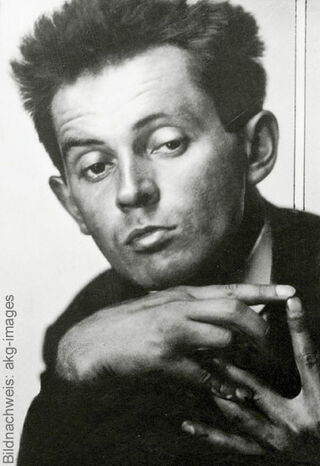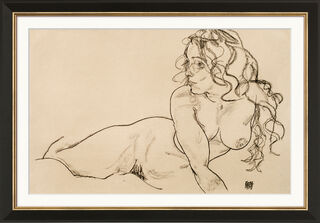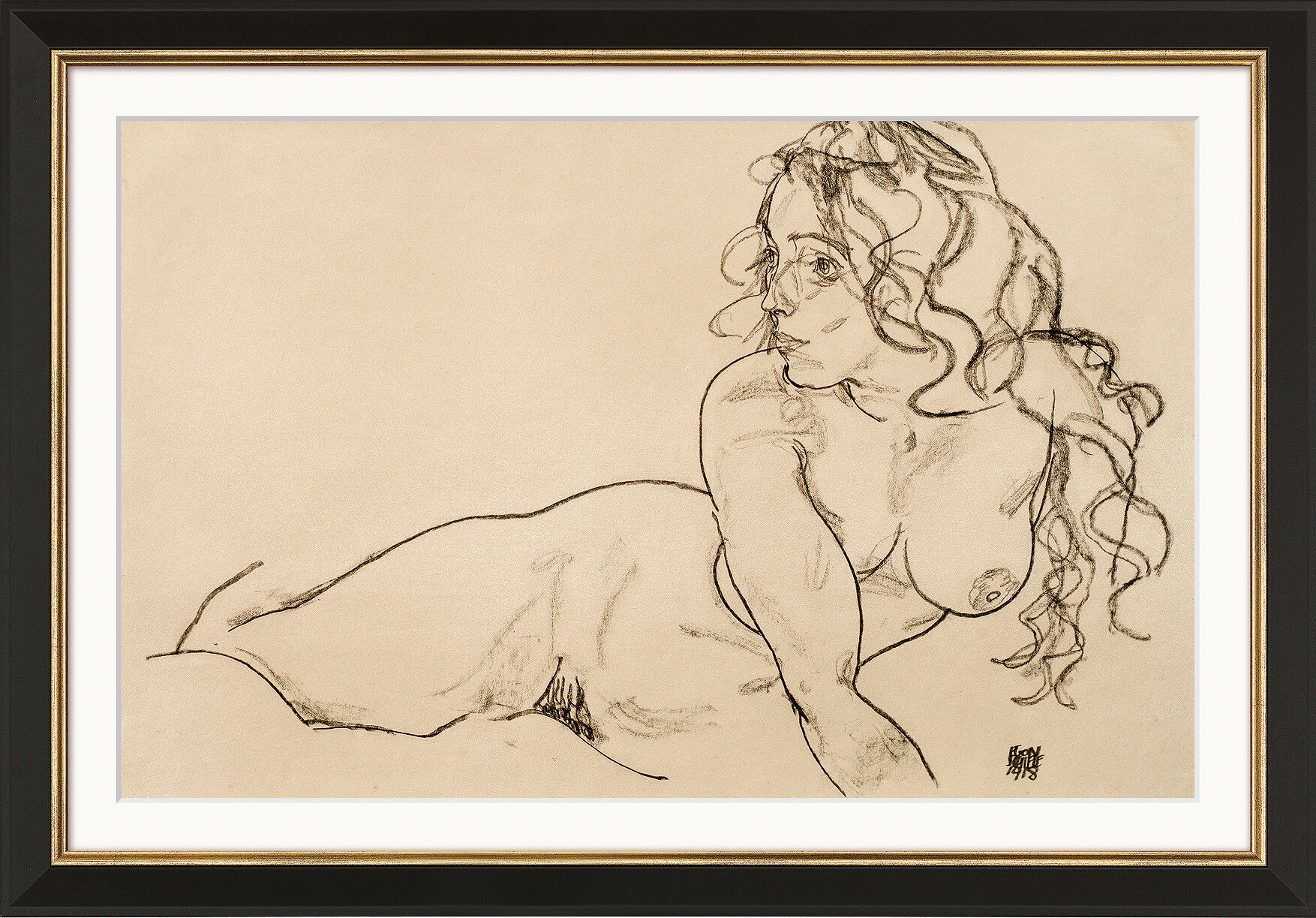Picture "Standing Nude Girl with Long Hair" (1918), framed


Picture "Standing Nude Girl with Long Hair" (1918), framed
Quick info
ars mundi Exclusive Edition | limited, 980 copies | numbered | certificate | reproduction, Giclée print on handmade paper watercolour | framed | glazed | passe-partout | size approx. 51 x 73 cm (h/w)
Detailed description
Picture "Standing Nude Girl with Long Hair" (1918), framed
Original: 1918, black chalk on paper, 28.6 x 45.6 cm. Vienna, Leopold Collection.
High-quality Fine Art Giclée museum edition in pigment colours on Hahnemühle genuine handmade watercolour paper. Limited edition of 980 copies, numbered on the back with certificate. Dustproof glazed and framed in fine solid wood frame in black satin with Munich gold and acid-free bevel cut passe-partout. Size approx. 51 x 73 cm (h/w). ars mundi Exclusive Edition.
Frame configurator
Customised picture frame

Frame configurator
Customised picture frame






Customer reviews
Frame variant: framed
Es ist großartig, genau wie ich es mir vorgestellt habe. Für mich ist es Wally - seine Muse - Es passt perfekt zu den anderen. Danke
Frame variant: framed
alles bestens!
Frame variant: framed
Hallo und einen schönen Tag an Euch !
Das Bild hat unsere Erwartungen weitgehens übertroffen !
Sehr schön, Lieferung topp, weiter so ! LG vom sehr zufriedenen Kunden !
Frame variant: framed
Einen ganz herzlichen Dank für so eine schöne optische Bereicherung. Außerdem eine top Lieferung und meine beste Empfehlung.

About Egon Schiele
1890-1918
The young artists who founded the rebellious so-called "Neukunstgruppe" (New Art Group) in 1909 wanted to break with the rigid traditions of academic fine art in the spirit of the Secession movements. One of those founders was Egon Schiele, born on 12 June 1890 in Tulln an der Donau ("on the Danube"), Austria, who had studied at the Vienna Academy from 1906-09.
His early work still bears Impressionist features and shows the influence of Gustav Klimt's Viennese Art Nouveau patterns, but from 1910 onwards more and more Expressionist features were included in his painting. His nudes of girls in particular are provocatively sensual and erotic, which went against the moral standards of the time and earned him a short prison sentence in 1912.
When he shifted to a more tectonic pictorial structure, he increasingly included city views and landscapes in his range of motifs. They never radiate cheerfulness, but rather are considered symbols of transience and death. The artist's mood is vehemently expressed through them as if he identified with them.
Egon Schiele sought to illustrate the spiritual life of his models in his portraits, through which the artist had achieved great recognition.
He repeatedly created paraphrases of main works by Gustav Klimt, Vincent van Gogh or Auguste Rodin. In 1915, Schiele was conscripted into military service. He expressed these experiences in more realistic and detailed paintings. On 31 October 1918 Schiele succumbed to the Spanish flu.
Schiele's works are considered the most important link between Art Nouveau and Expressionism and fetch top prices at international auctions. The most important Schiele collection in the world is in the Leopold Museum, Vienna.
Graphic or sculpture edition that was initiated by ars mundi and is available only at ars mundi or at distribution partners licensed by ars mundi.
Artistic movement that replaced Impressionism in the early 20th century.
Expressionism is the German form of the art revolution in painting, graphic art and sculpture, which found its precursor in the works of Paul Cézanne, Vincent van Gogh and Paul Gauguin in the late 19th century. The Expressionists attempted to advance to the primal elements of painting. With vibrant, unbroken colours in large areas and with the emphasis on the line and the resulting targeted suggestive expressiveness, they fought against the artistic taste established by the bourgeoisie.
The most important representatives of Expressionism were the founders of "Die Brücke" (The Bridge): Ernst Ludwig Kirchner, Erich Heckel, Karl Schmidt-Rottluff, Max Pechstein, Otto Mueller and Franz Marc, August Macke and others.
Masters of Viennese Expressionism are Egon Schiele and Oskar Kokoschka. Among the sculptors, Ernst Barlach is the most famous.
Fauvism is the French form of Expressionism.
Giclée = derived from the French verb gicler "to squirt, spurt".
The giclée method is a digital printing process. It is a high-resolution, large-format printout on an inkjet printer with special different-coloured dye- or pigment-based inks (usually six to twelve). The colours are fade-proof, i.e. resistant to harmful UV light. They have a high richness of nuance, contrast and saturation.
The giclée process is suitable for art canvases, handmade and watercolour paper as well as for silk.






